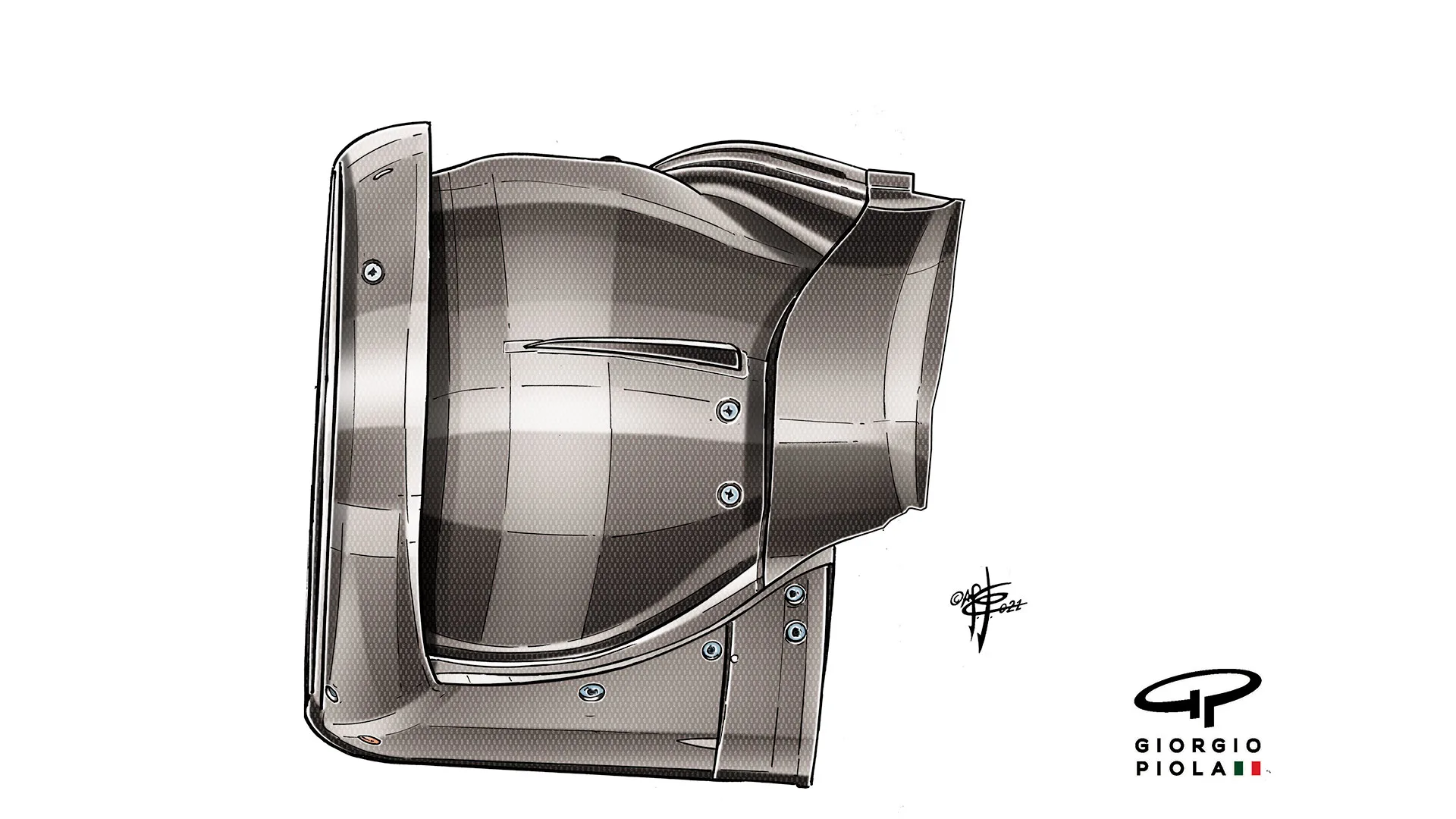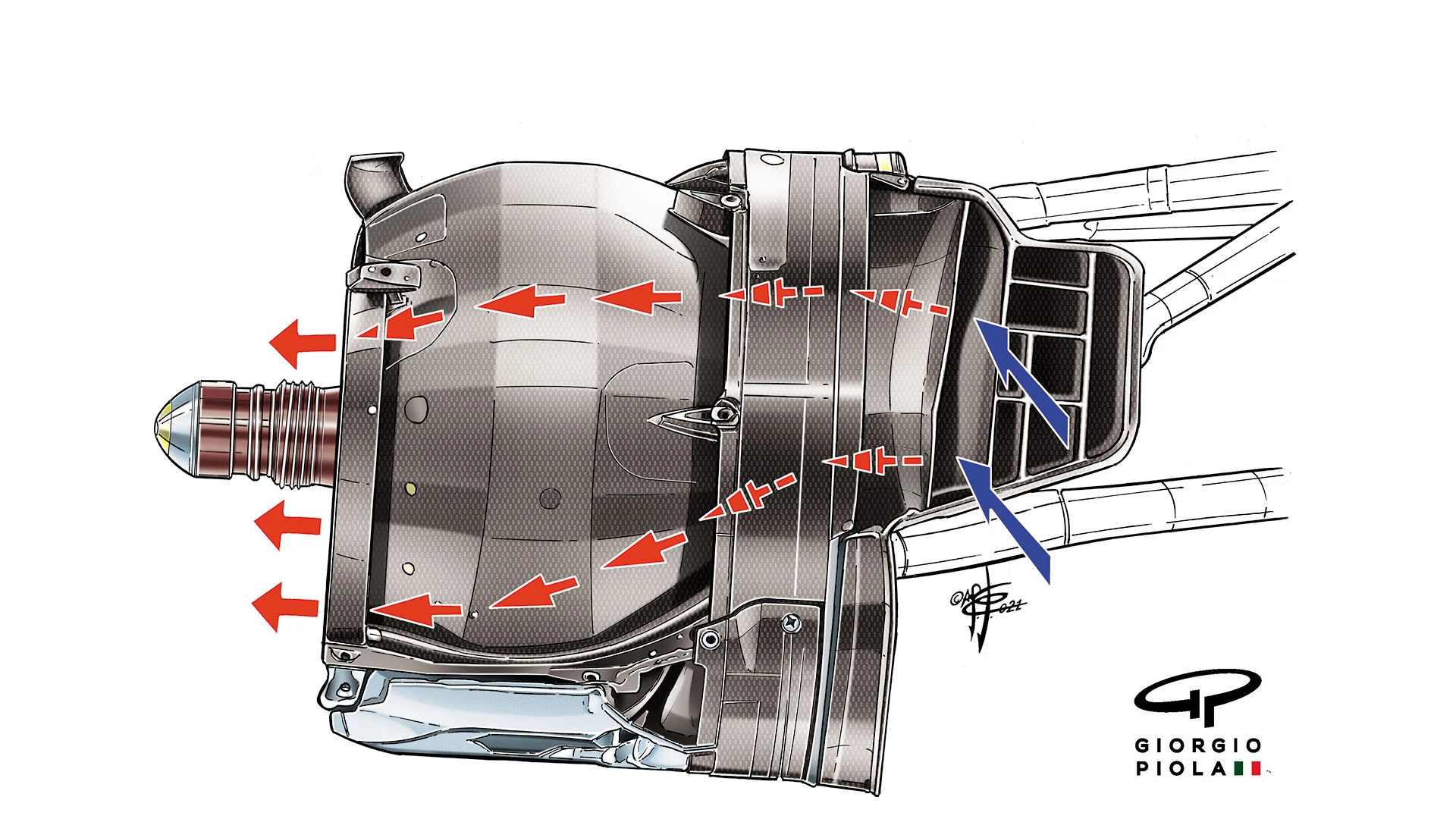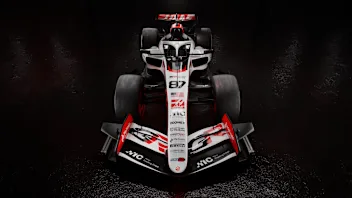TECH TUESDAY: How Ferrari's Mexico City brake experiment gave us a glimpse of F1's future


Mark Hughes looks at the late-season updates introduced by Ferrari that were evident in the Mexico City Grand Prix, with technical illustrations from Giorgio Piola.
At this stage of the season aerodynamic development programmes on the cars have all been switched off. But that doesn’t stop the teams from continuing to expand their understanding.
READ MORE: 10 things you need to know about the all-new 2022 F1 car
Mexico last weekend saw Ferrari introduce a new front brake duct assembly, which is a prototype for the 2022 regulations. The major intent of those regulations is to tidy up the aerodynamic wake from the cars, creating less disturbance in the air and making it easier for the car behind to follow closely and attempt overtaking moves.
As part of this, the regulations have effectively outlawed the blown wheels which currently direct the air from the brake ducts and through the wheels in a way which enhances the flow and helps create more downforce, but in so doing creates further turbulence in the air passing over the car.

Blown axles used to do this until their ban in 2019. So, aerodynamicists found a way of using the wheel hub design to do the same thing. For next year, the wheels must have a blanking cover which will make this practice impossible.
As part of closing off that avenue of development, the regulations also restrict the size of any openings there can be in the brake ducts. This brings with it a challenge in ensuring the brake ducts can still adequately do their primary job of cooling the brakes.
READ MORE: 10 things you need to know about the all-new 2022 F1 car

Mexico, with its high-altitude thin air, represents the biggest brake cooling challenge of the year – and so last weekend represented a perfect ‘worst case scenario’ experiment to see if the brakes could still be adequately cooled using the ’22 limitation on the size of the openings. Representatives from the brake supplier Brembo were on hand to help conduct the experiment.
WATCH: How does Mexico City's high altitude affect an F1 car?
For the first practice session, Charles Leclerc ran the standard 2021 brake ducts, with Carlos Sainz on the 2022 version, which had the restricted openings for cooling but still the ’21 aero effect.
The team were delighted to find that the ’22-spec brakes behaved perfectly, with fully adequate cooling levels. They were used on both cars for the rest of the weekend.
Next Up
Related Articles
.webp) Audi reveal their new car for 2026 F1 season
Audi reveal their new car for 2026 F1 season Team Previews 2026All you need to know about Audi ahead of 2026
Team Previews 2026All you need to know about Audi ahead of 2026.webp) Aston Martin and Honda mark start of works partnership
Aston Martin and Honda mark start of works partnership/SI202601151081.webp) Racing Bulls launch 2026 livery in Detroit
Racing Bulls launch 2026 livery in Detroit Check out every angle of Haas’ livery design for 2026
Check out every angle of Haas’ livery design for 2026.webp) 20 of the most exciting talents on the road to F1 in 2026
20 of the most exciting talents on the road to F1 in 2026